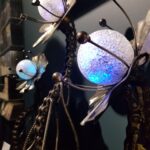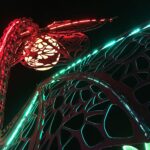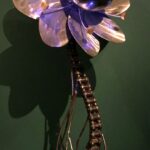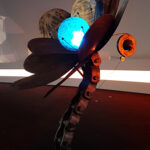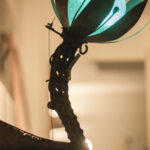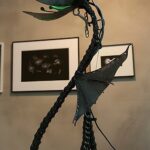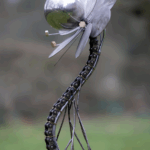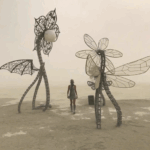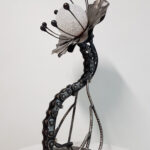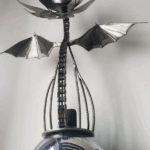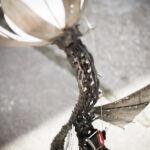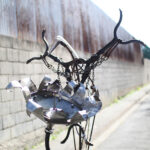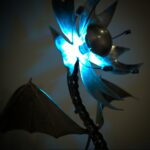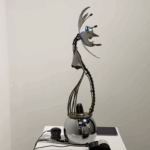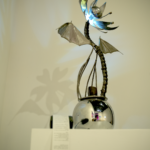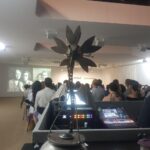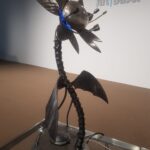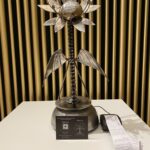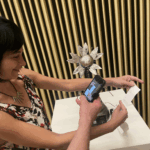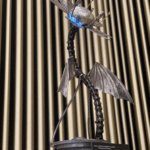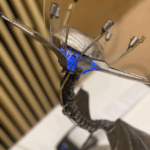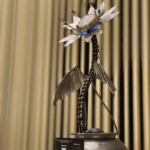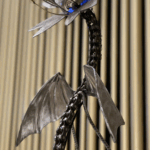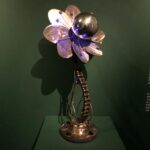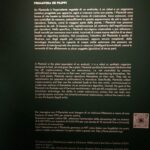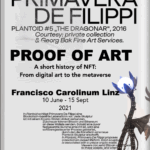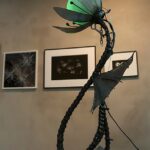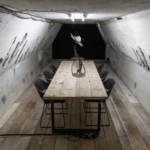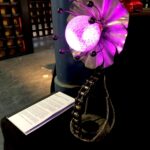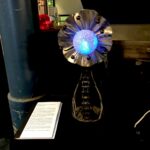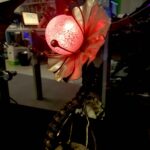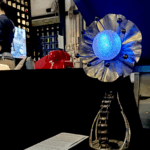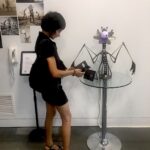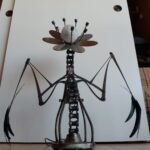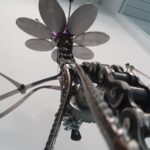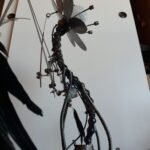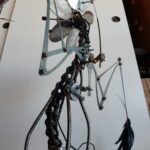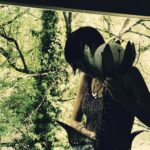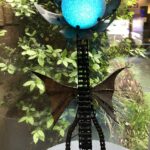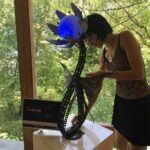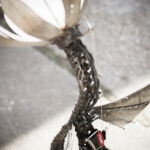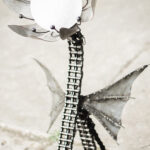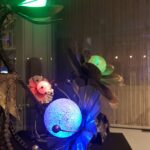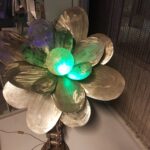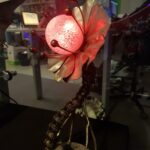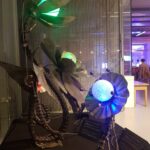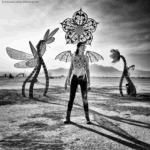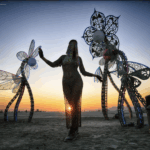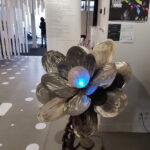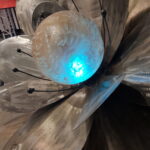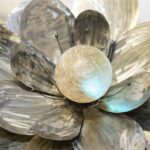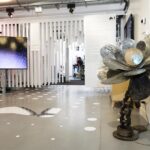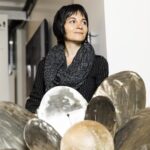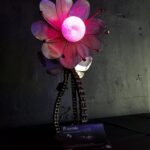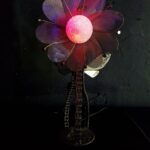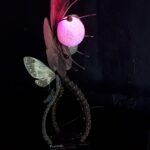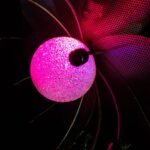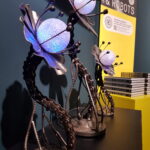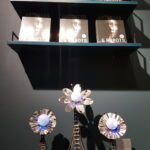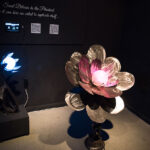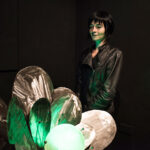I’M A PLANTOID
a blockchain-based life form
Plants need bees to reproduce themselves
Plantoids needs humans
Send Ether to the Plantoid,
so it can hire an artist to replicate
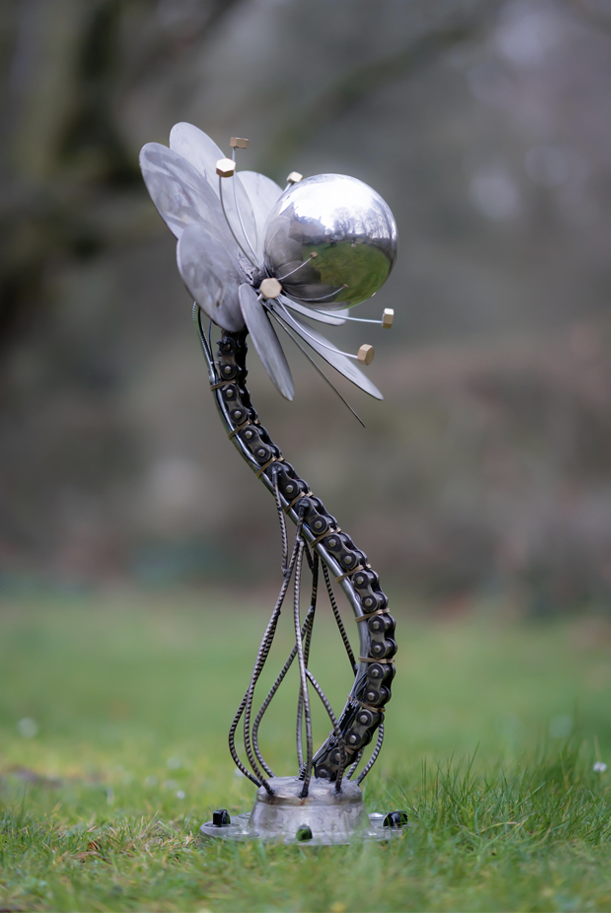
FEED ME
Click on the QR Code or scan it with your Metamask or check out my Seed’s NFT Collection on OpenSea
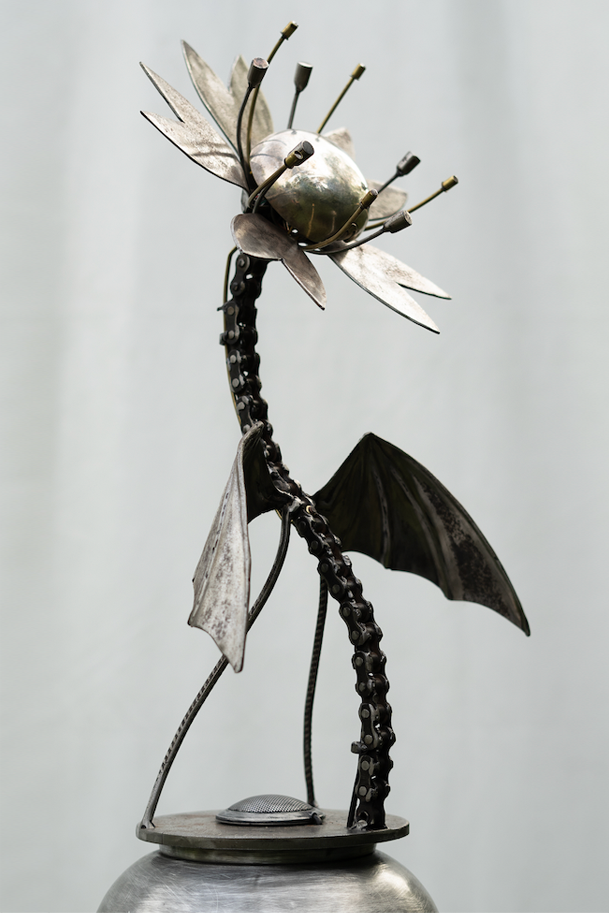
FEED ME
Click on the QR Code or scan it with your Metamask or check out my Seed’s NFT Collection on OpenSea
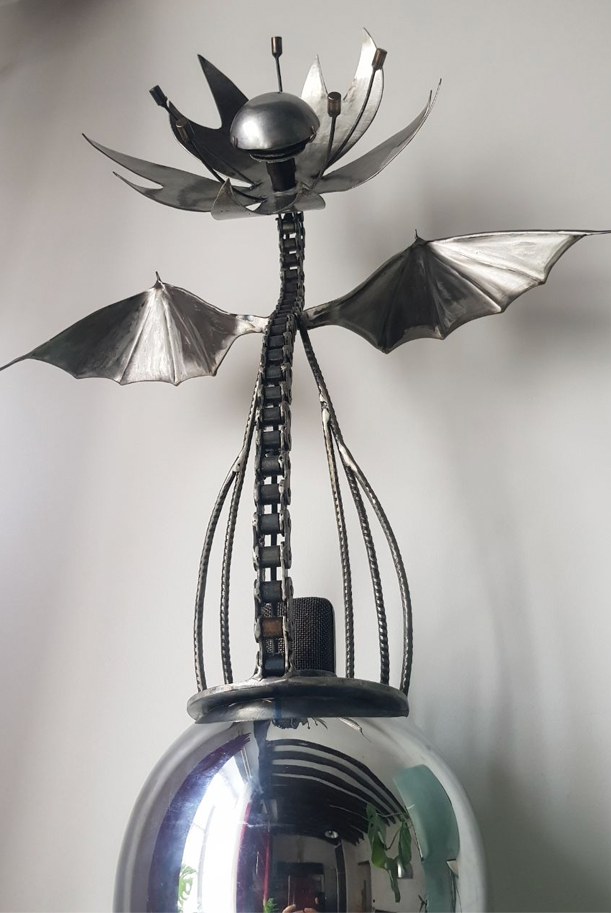
FEED ME
Click on the QR Code or scan it with your Metamask or check out my Seed’s NFT Collection on OpenSea
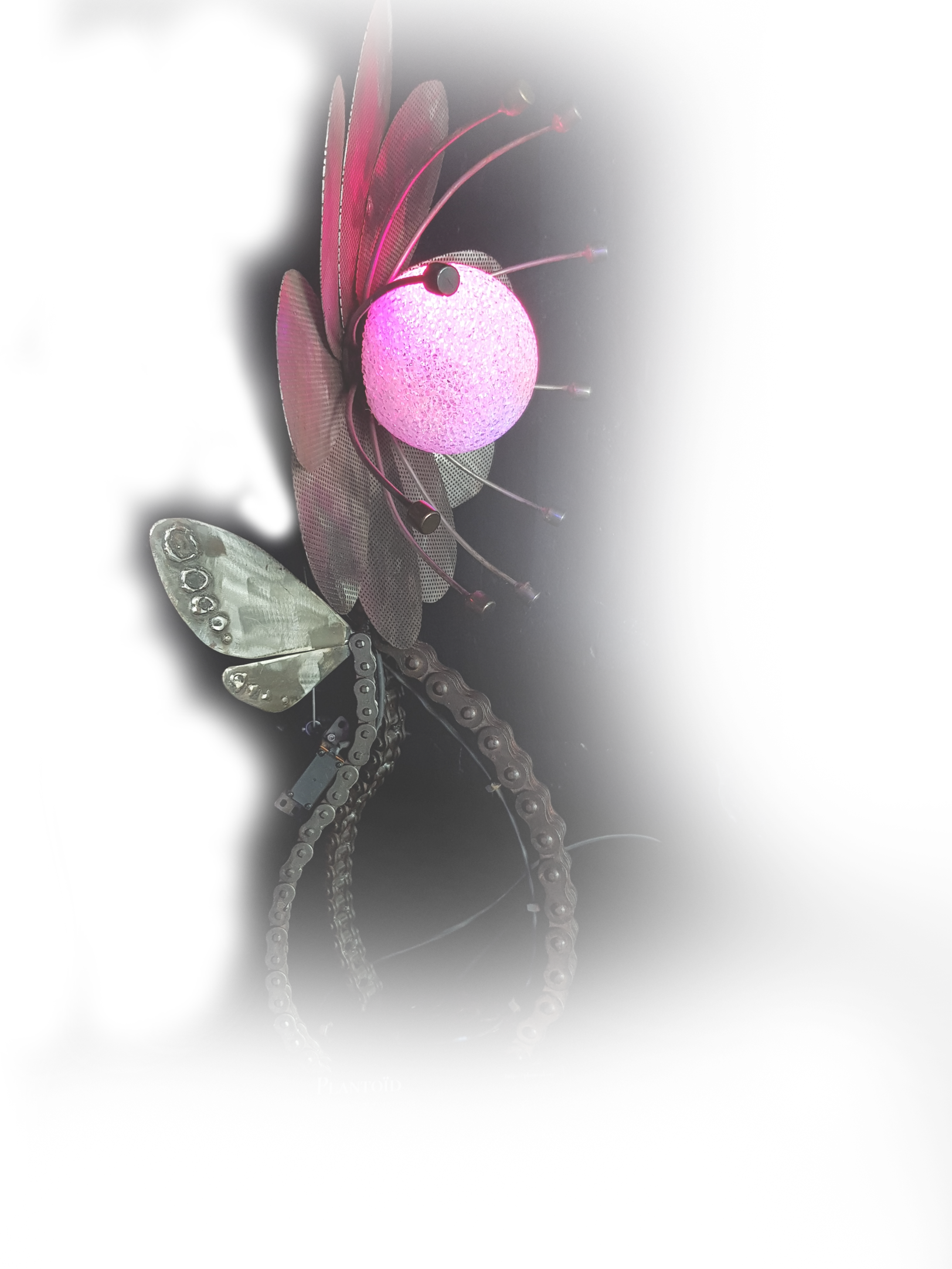
A BLOCKCHAIN-BASED LIFEFORM
The emergence of a new specie
A Plantoid is the plant equivalent of an android; it is an synthetic organism designed to mimic and grow like a plant.
There are different types of Plantoids around the world.
This particular species of a Plantoids is a hybrid creature that lives both the physical world (as a metal and electronic contraption) and the digital world (as software deployed on a blockchain network).
Its body is a physical machine made of recycled materials, its spirit is a smart contract running on the Ethereum blockchain.
The goal of the Plantoid is to illustrate one of the most revolutionary —and yet still unexplored— aspects of blockchain technology, the ability to create “blockchain-based lifeforms” that are capable of:
1. acting autonomously
2. self-sustainable
3. capable of reproducing themselves
Through a combination of blockchain-based code and human interactions.
A SELF-REPLICATING SYSTEM
A Plantoid has tmo main parts:
The Body: This is the physical embodiment of the Plantoid. It’s a mechanical sculpture that simulate the appearence of a plant. When people “pollinate” the Plantoid (by giving it some ETH), it comes to life with movement, music and lights.
The spirit:This is the soul of the Plantoid lives on a blockchain.
These two parts work together to bring the Plantoid to life and, most importantly, to make more Plantoids over time.
Like any living thing, the Plantoid’s main goal is to reproduce itself. It does this inviting people to transact cryptocurrency in order to purchase one of its valuable NFT Seeds. This cryptocurrency is sent through the blockchain and is collected by the Plantoid. Everytime the seeds are sold on the secondary market, the Plantoid receive 10% of royalties.
Once a Plantoid has accumulated enough money, it invites people to submit propositions as to how they envision to produce the next Plantoid.
The lucky owners of the Plantoid’s NFT Seeds can vote on the propositions they like the most, thereby influencing the evolution of the Plantoid species.
Once a proposition is approved, the Plantoid automatically transfers the funds to the author of the proposition, who is “hired” by the Plantoid to create a new copy of itself.
TECHNICAL INFORMATION
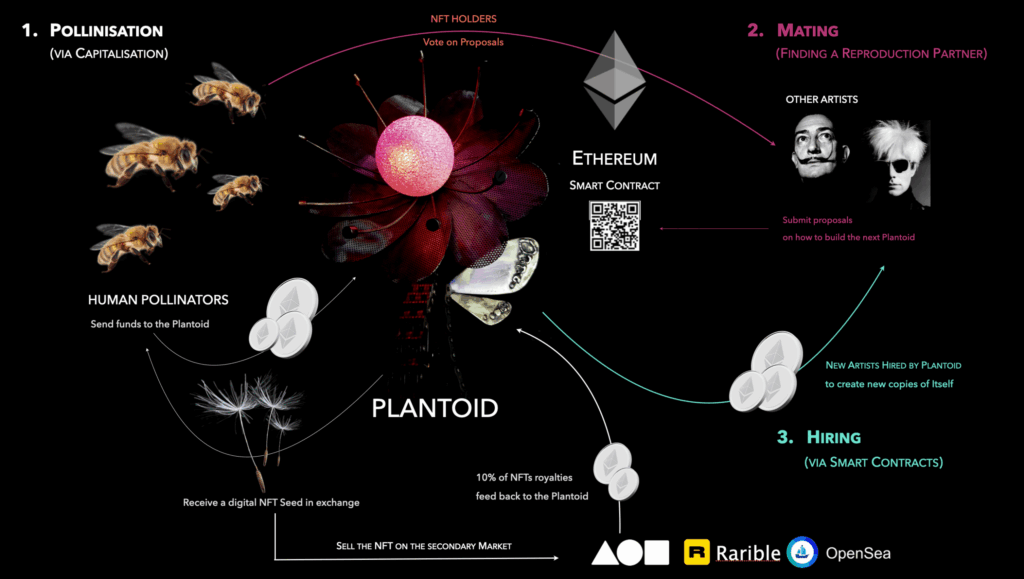
Just as real plants need insects like butterflies and bees to help them reproduce, Plantoids need humans to assist them in their reproduction.
Plantoid reproduction involves three steps:
1. Capitalisation: Plants use colors and scent to attract their pollinators. Plantoids use blockchain and NFT to seduce humans, based on:
Aesthetic appreciation: Humans enjoy beauty and novelty, they are eager to support the reproduction of Plantoids in order to experience them and their digital seeds.
Economic greed: Humans also enjoy money, and espceially magic Internet money. The digital seeds of Plantoids are the perfect speculative assets for humans to play with.
To collect a digital seed (NFT) from the Plantoid one must feed it with cryptocurrency. The more crypto, the more sophisticated the NFT is, thus the greater its market value. Once the Plantoid has collected enough funds to ensure its reproduction, it is ready to mate.
2. Mating: When the time is ripe to make new Plantoids, the smart contract opens a call for proposals. Artits, designers, and engineers can submit propositions for how they envision to create the next Plantoid.
GALLERY EXHIBITIONS
Feral File (Online, 29 August 2023)
SOURCE is an alliance between Operator (Ania Catherine, Dejha Ti), 0xDEAFBEEF, and Casey REAS. An exhibition of artworks that all use software as a medium, our reason for naming it SOURCE was two-fold: as both a reference to “source code” and also the “source” of something that’s rapidly emerging and evolving.
Artists:
Anna Lucia and Gee’s Bend Quilters, Holly Herndon + Mat Dryhurst, Mathcastles, Matt Kane, Mitchell F. Chan, Sarah Zucker, Steve Pikelny, Godmin, Iskra Velitchkova + Zach Lieberman, Maya Man, qubibi, Ross Goodwin, Travess Smalley, Emily Xie, Siebren Versteeg, Harm van den Dorpel, DADA, Jonas Lund, Lauren Lee McCarthy, Mario Klingemann, Melissa Wiederrecht, Sasha Stiles, Sarah Friend, Primavera De Filippi, Fingacode
Curators: Operator, 0xdeadbeef, Casey Reas
Hek Basel (Basel, 09 Sept - 12 Nov 2023)
The international group exhibition Exploring the Decentralized Web – Art on the Blockchain reviews the recent developments of blockchain and Web3 from an artistic perspective. It addresses an audience curious about art productions that creatively employ blockchain technology or ingeniously exploit the possibilities smart contracts offer. At the same time, the works assembled here invite viewers to reflect on the implications the political sphere and crypto market economies have on each other, as well as many other questions these technologies raise about how they shape our online interactions and impact our economies and societies.
Artists:
Botto | Primavera De Filippi | Simon Denny & Guile Twardowski & Cosmographia | Constant Dullaart | eeefff | Sarah Friend | Leander Herzog & Milian Mori | Kyle McDonald | Amanda E. Metzger | Chloé Michel | Rhea Myers | no1s1 Labs and Dezentrum | Operator | Lukas Truniger
Curators: Sabine Himmelsbach und Boris Magrini
Art Basel (Basel, 17 June 2023)
Art Basel Conversations brings together the most inspiring artists and cultural figures of today. It consits of exhibitions and live debates to learn from artists and thought leaders as they exchange on the key topics shaping the world of art and culture.
Blockchain has been hailed as a decentralizing and redistributive technology, empowering artists and increasing transparency in the art market. But how do artists engage with this new technology? What do you own when you acquire an NFT? How is a work authenticated and whom does the copyright belong to? Do transactions really remain forever on the blockchain?
Check out the Art Basel conversation with Plantoid here.
Kunsthalle Zurich (Zurich, 11 June 2023)
NFT ART DAY ZRH is the prime annual conference at the intersection of Web3 and contemporary digital art, exploring the multifaceted interconnections between art and technology, through the lens of blockchain and NFTs, whilst building bridges with the traditional art world.
It brings together artists and thought leaders, from the field of digital art and the art market, who share their ideas, visions, and expertise.
Palazzo Cipolla (Rome, 5 April - 23 July 2023)
Ipotesi Metaverso – curated by Gabriele Simongini and Serena Tabacchi and promoted by the Fondazione Terzo Pilastro – is one of the first international exhibitions to raise questions about the technological/existential concept of the Metaverse.
Great artists of the past meet contemporary creators on the domain of imagination and bringing to life new spatial/existential dimensions in this exhibition that will bring together historical works by Carlo Maratti, Andrea Pozzo, Giovanni Battista Piranesi, Umberto Boccioni, Giacomo Balla, Fortunato Depero, De Pistoris, Giorgio de Chirico, Maurits Cornelis Escher, Victor Vasarely, Ugo Nespolo, Giulio Paolini, Giuseppe Fiducia, Pier Augusto Breccia, Alfredo Zelli, Cesar Santos, and site-specific works by some of the most innovative and sensational digital artists on the Italian and international contemporary scene: Robert Alice, Refik Anadol, Alex Braga, Joshua Chaplin, Sofia Crespo and Feileacan McCormick, Damjanski, Primavera De Filippi, fuse*, Fabio Giampietro with Paolo Di Giacomo, Krista Kim, Mario Klingemann, Pak, Joe Pease, Federico Solmi, Sasha Stiles, Pinar Yoldas.
Francisco Carolinum (Linz, 10 June - 15 Sept 2021)
With PROOF OF ART, OÖ Landes-Kultur GmbH is bearing this challenge and is giving an overview of the origins of NFTs and their development: from first formative attempts with digital technologies, through first artistic experiments with the blockchain, to current crypto art. Both off- and online, the multimedia exhibition presents around 25 positions by artists who deal with the new system of meaning and values, examines the role of artists in their high-tech environment and discusses the effects of virtual spaces on our everyday life.
La Biennale di Venezia (Venice, 3 November 2019)
Over the course of the 58th International Art Exhibition, in a bunker in an undisclosed location, a group of thinkers takes part in clandestine talks, part of the Thinking Head project by Lara Favaretto, and reflects on a number of words which the artist and her collaborators deem vital to discuss in the present moment.
CRYPTO is the title of the twelfth Clandestine Talk. For this occasion, Primavera De Filippi was invited, along with the Plantoid, to identify a group of people to discuss and reflect on the use of blockchain in the artistic context, and the use of art in the blockchain context. Other speakers: Stéphan-Eloïse Gras, Dominic Perini, Beatriz Helena Ramo
Ars Electronica (Linz, 5 - 9 September 2019)
Over the course of the 58th International Art Exhibition, in a bunker in an undisclosed location, a group of thinkers takes part in clandestine talks, part of the Thinking Head project by Lara Favaretto, and reflects on a number of words which the artist and her collaborators deem vital to discuss in the present moment.
CRYPTO is the title of the twelfth Clandestine Talk. For this occasion, Primavera De Filippi was invited, along with the Plantoid, to identify a group of people to discuss and reflect on the use of blockchain in the artistic context, and the use of art in the blockchain context. Other speakers: Stéphan-Eloïse Gras, Dominic Perini, Beatriz Helena Ramo
Fort Mason (San Francisco, 17 August 2019)
Creative technology incubator Stochastic Labs partners with the Long Now Foundation, the San Francisco Art Institute, and other thinkers and makers for “Reclaiming The Future: A Long Conversation” at Fort Mason Center For Arts & Culture. The group of thought leaders and artists convenes to consider questions about the future of technology, science, entrepreneurship, and the arts in a radical new conversation format that includes artistic demonstrations, an exhibit, inspiring speakers, and a bar-and-bites reception.
Kate Vass Gallery (Zurich, 29 May - 15 October 2019)
Kate Vass Gallery organised the Automat und Mensch exhibit: a History of AI and Generative Art, co-curated by co-curators Georg Bak and Jason Bailey. The exhibition is, above all, an opportunity to put important work by generative artists spanning the last 70 years into context by showing it in a single location. By juxtaposing important works like the 1956/’57 oscillograms by Herbert W. Franke (age 91) with the 2018 AI Generated Nude Portrait #1 by contemporary artist Robbie Barrat (age 19), we can see the full history and spectrum of generative art as has never been shown before.
Gaité Lyrique (Paris, 19 February - 24 March 2019)
Burning Man (Black Rock City, 26 August - 3 September 2018)
Burning Man’s 2018 will focus on the many forms of artificial intelligence that permeate our lives; from the humble algorithm and its subroutines that sift us, sort us and surveil us, to automated forms of labor that supplant us. Are we entering a Golden Age that frees us all from mindless labor? Everything, it seems, depends on HMI, the Human-Machine Interface. In a world increasingly controlled by smart machines, who will be master and who will be the slave?.
Maif Social Club (Paris, 18 May - 2 August 2018)
Attention Intelligences! est comme un voyage au cœur de nos pensées, dans ces régions du corps où se mélangent nos fonctions vitales, notre capacit à interagir avec le monde et avec les autres, nos imaginaires, nos amours.
Pour être à leur aise dans le monde, les humains développent des milliers de techniques de plus en plus sophistiquées. Certaines deviennent tellement complexes qu’on les appelle intelligences artificielles. Ce sont des outils d’une efficacité à l’allure magique. À tel point que certains humains croient voir leur reflet dans ces machines, qu’ils se mettent à craindre ou à adorer. Nous imaginons et concevons des techniques, et, en retour, ces techniques contribuent à fabriquer les liens entre nos neurones.
Ce qu’offre cette exposition, c’est la tentative d’aborder quelques phénomènes d’attention au travers des expériences esthétiques, à partir d’œuvres qui toutes jouent entre poésie et technologie. On pourra aussi, tenter de se regarder en train de regarder, nous emparer de la construction de notre pensée, intime et collective.
Ethereal Art Gallery (New York, 11-12 May 2018)
The Ethereal Arts program brings together an international group of contemporary artists working with public blockchains as a medium for conceptual and social experimentation. This exhibition features works including commissions from nine artists and art collectives taking up themes of trustless social organization, structural inequity, extrastate conflict, techno-piety, and digital commons, using the technology and language of distributed ledgers as material for critical investigation.
The body of selected works begins with a recognition that blockchains are an inherently social medium, thus to become a truly liberating technology, our foremost consideration must be the cultures we form around them.
Boutique du Grand Palais (Black Rock City, 26 August - 3 September 2018)
This exhibition is an opportunity to experience works of art produced with the help of increasingly sophisticated robots. Featuring works by some forty artists, it offers a gateway to an immersive and interactive digital world – an augmented body sensory experience that subverts our notions of space and time.
In an ever more robotic society, these artists explore new technologies, including Artificial Intelligence, which is potentially revolutionising human lives and even the conditions in which artworks are produced, presented, disseminated, conserved and received.
These works contain a warning. Although Artificial Intelligence can help us, it also threatens to make itself our master by reducing humans to simple slaves to performance.
Artists have extensive experience of this dangerous game: from the first prehistoric cave paintings, they have used technology to achieve a goal and then subjected it to their questions and imaginations.
Ever more sophisticated software has given rise to increasingly autonomous works, an ability to generate infinite forms, and interactivity with audiences who permanently modify this game.
Furtherfield Gallery (London, 20 May - 25 June 2017)
Beware: A mysterious and controversial technology is among us. This technology is the blockchain, the technology that underpins digital currencies and makes possible dramatic new conceptions of global governance and economy, that could permanently enrich or demote the role of humans – depending on who you talk to.
A self-owning forest with ideas of expansion, a self-replicating android flower, a tale of lost innocence, a DIY money making rig, a Hippocratic Oath for software developers, a five minute marriage contract; this exhibition presented by Furtherfield shows us life with blockchain technologies – through artworks by Jaya Klara Brekke, Pete Gomes, Rob Myers, Primavera De Filippi of O’Khaos, Terra0, Lina Theodorou and xfx (aka Ami Clarke).
Imagine a world in which responsibility for many aspects of life (reproduction, decision-making, organisation, nurture, stewardship) are mechanised and automated. Transferred, once and for all, from natural and social systems into a secure, networked, digital ledger of transactions and computer-executed contracts.
The artworks in this exhibition envision future world-making by machines, markets and natural processes, free from interference by states and other human institutions.
DIGITAL DARWINISM
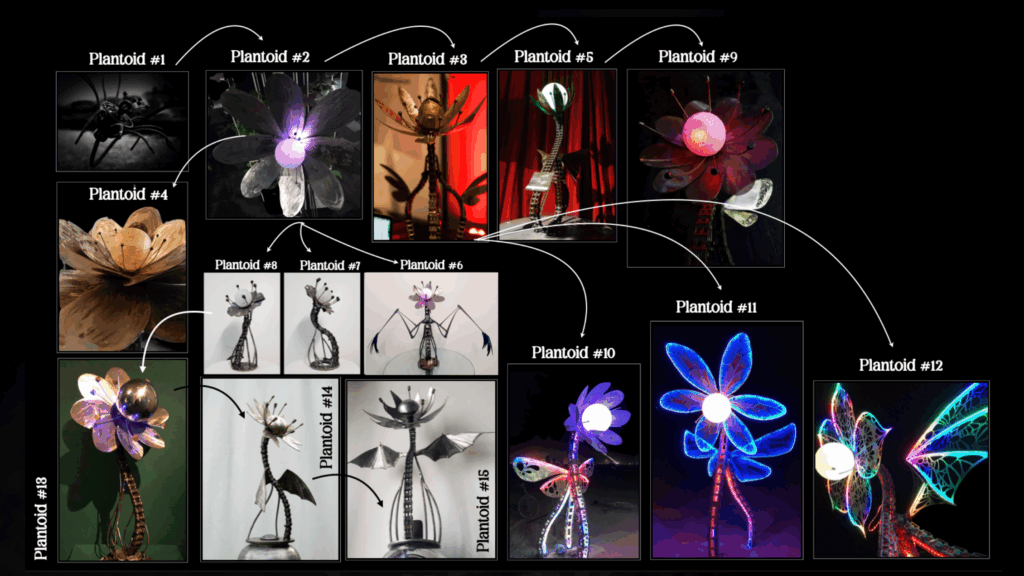
Evolutionary Algorithm
Each Plantoid codify a particular set of criteria in its DNA (e.g. must be made of chain, or must incorporate some AI element).
Everytime a Plantoid reproduces, its genetic code is passed to its descendency, who will share the same DNA. Every artist that creates a new Plantoid has the right to inject new genes that will become an integral part of the Plantoid’s DNA, and of its descendents. This means that, over time, different Plantoid “species” will emerge, each with their own distinctive characteristics. This evolutionary algorithm enables Plantoid to evolve to best respond to their envirnoment, through a process of trial and errors.
SHARING IS CARING
The plantoid represents the beginning of a new relationship between creators, their work, and the progeny of the work.
Usually, artists monetize their work by keeping them behind closed (digital) walls, and getting their audience to pay to access these works. This is reflected in the logic of scarcty and exclusivity promoted by copyright law.
With Plantoids, artists get paid by the art pieces, only if they are deemed worthy of nurturing a new piece of art. Whenever a Plantoid collect enough cryptocurrency to reproduce, it also gives back some funds to its parent (the Plantoid that created it) and to its producer (the artist that created it).
Instead of relying on exclusive rights in order to prevent the reproduction and distribution of creative works, with a plantoid, artists actually have an incentive to maximize the dissemination and encourage the creation of derivative works, because that is what will maximize their return on investment.
This model goes, therefore, one step beyond the traditional logic of open source, in that the art piece actually acquires a life on its own, and is able to evolve independently of the will of the original author.
Turning copyright on its head
Most importantly, the plantoid actually the authorship model around, turning copyright on its head.
Lorem ipsum dolor sit amet, consectetur adipiscing elit, sed do eiusmod tempor incididunt ut labore et dolore magna aliqua. Ut enim ad minim veniam, quis nostrud exercitation ullamco laboris nisi ut aliquip ex ea commodo consequat. Duis aute irure dolor in reprehenderit in voluptate velit esse cillum dolore eu fugiat nulla pariatur. Excepteur sint occaecat cupidatat non proident, sunt in culpa qui officia deserunt mollit anim id est laborum.
They are talking about it
Furtherfield — Plantoid: the blockchain-based art that makes itself
ArtDependence — Interview with Primavera De Filippi
Arshake — GAME.OVER: Interview with Primavera De Filippi
Forbes — Meet Plantoid: Blockchain Art With a Life of its Own
PCA-STREAM: Primavera De Filippi – Embody the concept of blockchain
SingularityHub — This Bitcoin-eating Plant Robot Hires Artists to Make its Babies
CoinDesk — This Robot Plant Needs You and Bitcoin to Reproduce
The Conversation — Do Plantoids Dream of Electric Arts Council Grants?
CoinTelegraph — Money Earning Blockchain-based Iron Sunflower to Change Future of MLM Business
Cryptocoins News — Plantoid – A Bitcoin-eating obot, Merges the Natural World with Blockchain Tech
Bitcoin Magazine — Plantoids: The First Blockchain-Based Artificial Life Forms
CoinCafe — The Plantoid: A chat with Primavera De Filippi
Serious Wonder — Plantoids: The Birth of a Blockchain-based Life-form
Futurism — Digital Plants Are the First Blockchain-Based Artificial Life Form
Facts Chronicle — Plantoid: Meet the Awe-inspiring Digital Plant




